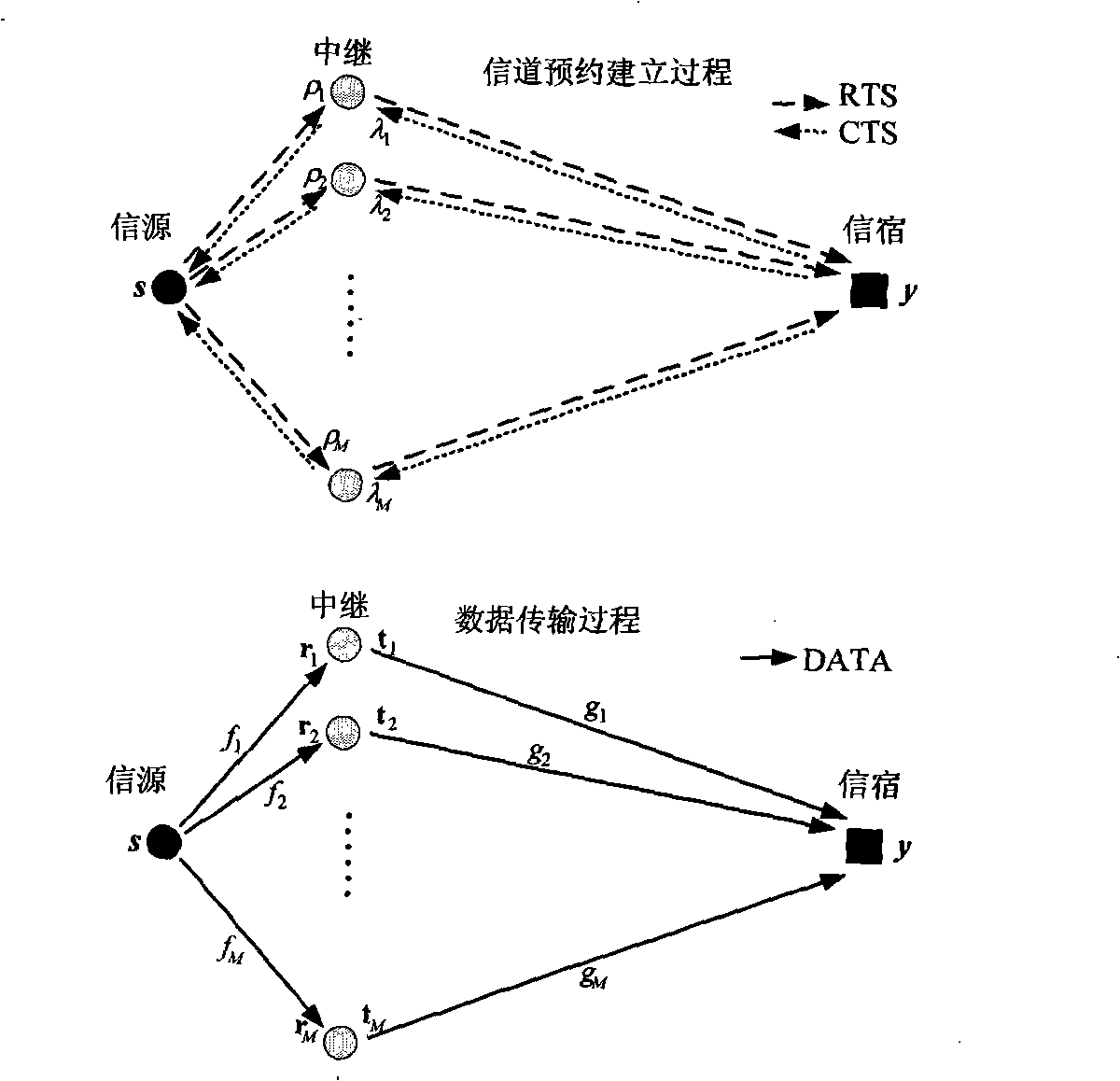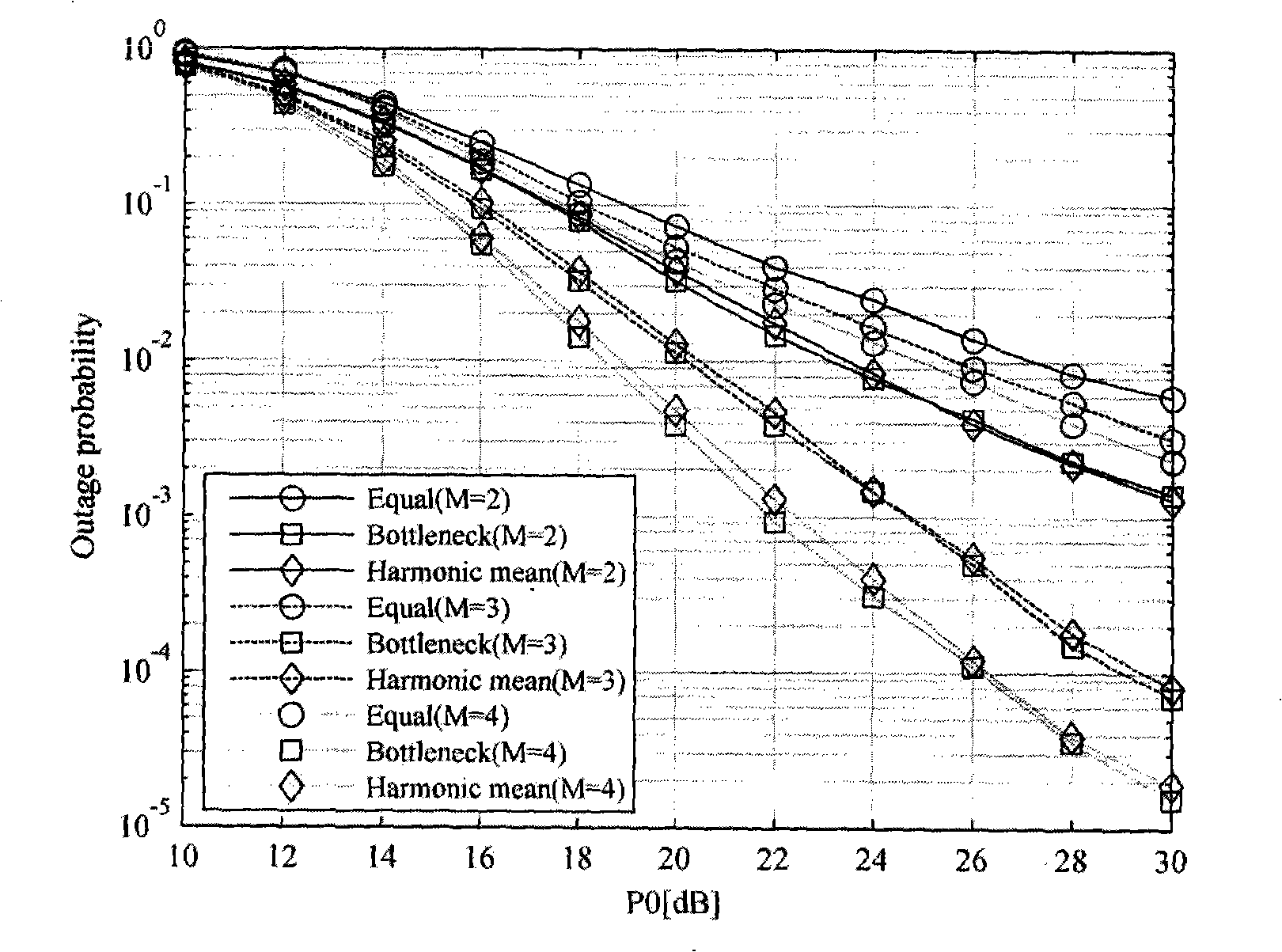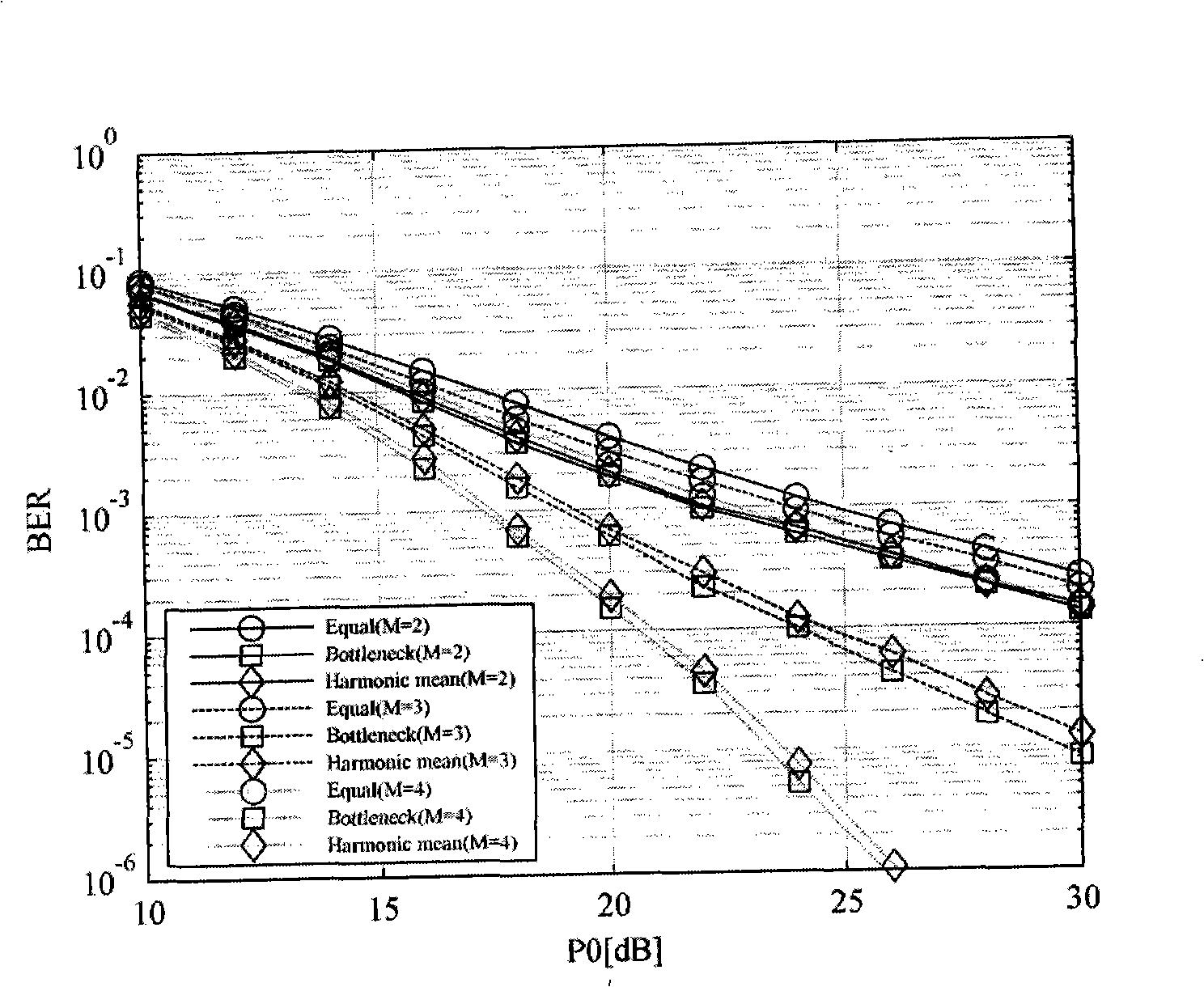Distributing and transmitting scheme with amplified forwarding power for wireless sensor network of two-hops
A wireless sensor, amplification and forwarding technology, applied in the direction of space transmit diversity, diversity/multi-antenna system, prevention/detection of errors through diversity reception, etc., can solve complex protocol processing, uncertain or changing relay nodes, and failure to reach Issues such as full diversity gain can achieve the effect of reducing the total transmission power, reducing the probability of interruption, and low complexity
- Summary
- Abstract
- Description
- Claims
- Application Information
AI Technical Summary
Problems solved by technology
Method used
Image
Examples
Embodiment Construction
[0015] see figure 1 , the two-hop wireless sensor network amplifying and forwarding power allocation transmission scheme based on distributed linear dispersion codes of the present invention mainly includes the following steps:
[0016] Step 1: In a two-hop wireless sensor network, the transmitter as the source node sends an RTS packet to a potential relay node to make a channel reservation request.
[0017] Step 2: Each relay node that receives the RTS packet estimates its SNR ρ k (k=1, 2, ..., M), embed the SNR information into the RTS packet of long-distance communication, and then send the RTS packet to the sink respectively to reserve a channel, and the sink estimates the RTS packet from each relay node SNR λ k (k=1, 2, . . . , M).
[0018] Step 3: The sink embeds the estimated signal-to-noise ratio of the remote communication RTS packet into the CTS packet and returns it to the relay node, and after receiving it, the relay node embeds it into the local communication C...
PUM
 Login to View More
Login to View More Abstract
Description
Claims
Application Information
 Login to View More
Login to View More - R&D
- Intellectual Property
- Life Sciences
- Materials
- Tech Scout
- Unparalleled Data Quality
- Higher Quality Content
- 60% Fewer Hallucinations
Browse by: Latest US Patents, China's latest patents, Technical Efficacy Thesaurus, Application Domain, Technology Topic, Popular Technical Reports.
© 2025 PatSnap. All rights reserved.Legal|Privacy policy|Modern Slavery Act Transparency Statement|Sitemap|About US| Contact US: help@patsnap.com



